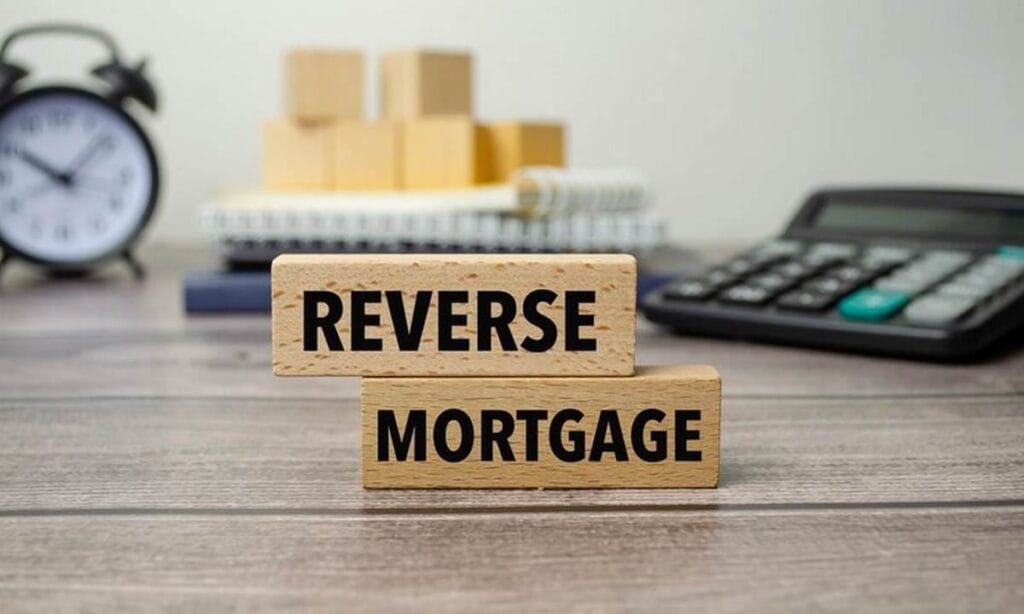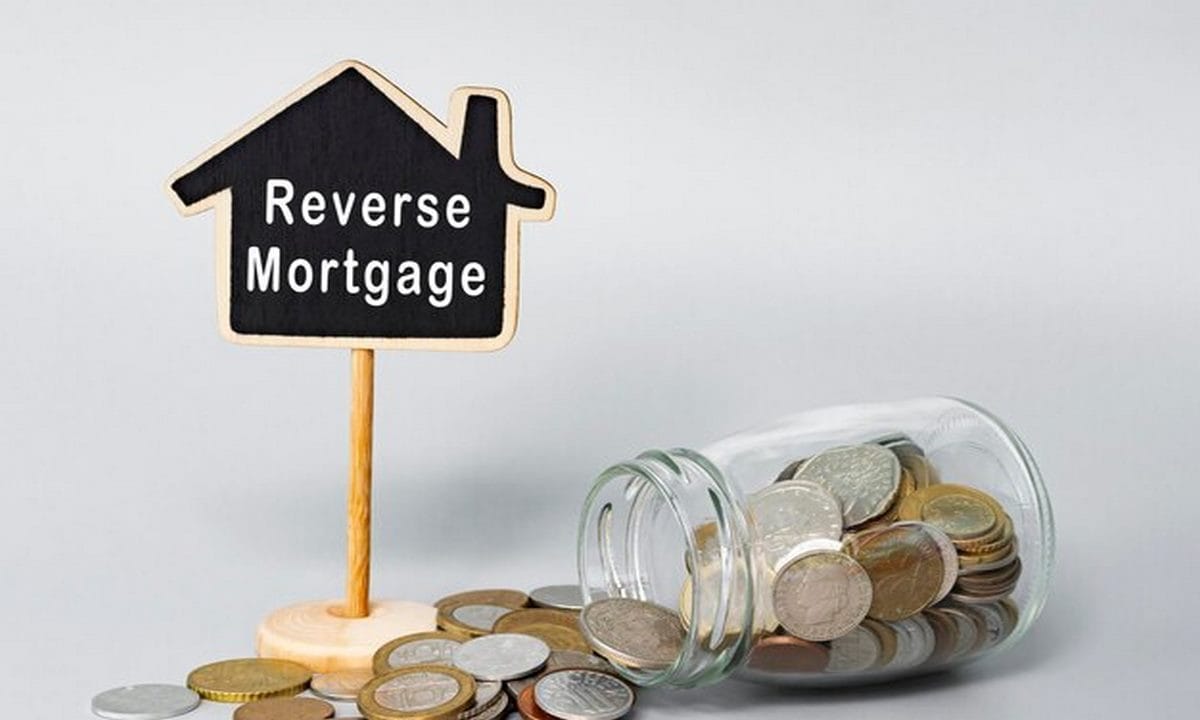reverse mortgages are financial tools designed to help homeowners aged 62 and older convert part of their home equity into cash. Unlike a traditional mortgage, where you make monthly payments to a lender, with a reverse mortgage, the lender makes payments to you. This can provide a crucial source of funds for retirees who need additional income to cover living expenses, healthcare costs, or other needs.

Why Consider a reverse mortgage?
A reverse mortgage can be an attractive option for those who have significant home equity but limited cash flow. It allows homeowners to remain in their homes while receiving payments, which can be structured in various ways to suit individual financial needs. Understanding how much money you can get from a reverse mortgage and how it works is essential for making an informed decision.
Basics of reverse mortgages
Defining reverse mortgages: What Are They?
A reverse mortgage is a loan available to homeowners who are 62 or older, enabling them to access a portion of their home’s equity. The loan amount is based on several factors, including the homeowner’s age, the home’s value, and current interest rates. Repayment of the loan is deferred until the homeowner sells the home, moves out permanently, or passes away.
History and Evolution of reverse mortgages
The concept of reverse mortgages originated in the 1960s as a way to help retirees with limited incomes tap into their home equity. Over the years, reverse mortgages have evolved, with significant changes in regulations and protections to safeguard borrowers. Today, reverse mortgages are more structured and come with various consumer protections to ensure they are used appropriately.
How reverse mortgages Work
reverse mortgages allow homeowners to borrow against their home equity without having to sell their homes. The lender makes payments to the borrower, and interest accrues on the loan balance. The loan must be repaid when the borrower sells the home, moves out permanently, or dies. The repayment amount includes the loan principal, interest, and any fees.
Eligibility Criteria
Who Qualifies for a reverse mortgage?
To qualify for a reverse mortgage, you must be at least 62 years old and own your home outright or have a substantial amount of equity. The home must be your primary residence, and you must maintain the property and keep up with property taxes and insurance.
Age and Homeownership Requirements
Eligibility hinges on both age and homeownership status. The older you are, the more equity you can potentially access. Additionally, you must either own your home outright or have a low remaining mortgage balance that can be paid off with the proceeds from the reverse mortgage.
Read More : Can a reverse mortgage be repaid?

Types of reverse mortgages
Home Equity Conversion Mortgage (HECM)
The most common type of reverse mortgage is the Home Equity Conversion Mortgage (HECM), which is insured by the Federal Housing Administration (FHA). HECMs offer flexible payout options and are subject to federal regulations, providing a layer of protection for borrowers.
Proprietary reverse mortgages
Proprietary reverse mortgages are private loans backed by the companies that develop them. These are typically available to homeowners with higher-value homes and can offer larger loan amounts than HECMs.
reverse mortgages Single-Purpose
Single-purpose reverse mortgages are offered by some state and local government agencies and non-profit organizations. These loans can only be used for a specific purpose, such as home repairs or property taxes, and generally have lower costs.

Factors Influencing Payout
Home Value: Key Determinant of reverse mortgage Amount
The amount you can borrow with a reverse mortgage is primarily determined by the appraised value of your home. Higher home values typically result in higher loan amounts.
Age of Borrower: How It Affects the Loan
The age of the youngest borrower significantly influences the loan amount. Older borrowers can access a larger portion of their home equity because their life expectancy is shorter, reducing the lender’s risk.
Current Interest Rates: Impact on reverse mortgage Payout
Interest rates also play a crucial role in determining the payout. Lower interest rates allow for higher loan amounts, while higher rates reduce the amount you can borrow.
Calculating the reverse mortgage Amount
Loan-to-Value Ratio: Understanding the Calculation
The loan-to-value (LTV) ratio is a critical factor in reverse mortgage calculations. It represents the percentage of your home’s appraised value that you can borrow. This ratio varies based on your age, home value, and current interest rates.
Using reverse mortgage Calculators
reverse mortgage calculators are valuable tools for estimating how much money you can get from a reverse mortgage. By inputting your age, home value, and interest rate, you can get a rough estimate of your potential loan amount.
Payment Options
Lump Sum Payments: Pros and Cons
A lump sum payment provides all the loan proceeds at once. This option is beneficial for those who need a significant amount of money upfront but requires careful management to avoid depleting funds too quickly.
Monthly Payments: Steady Income Stream
Opting for monthly payments can provide a steady, predictable source of income, making it easier to budget and manage living expenses over time.
Line of Credit: Flexible Withdrawals
A line of credit offers the most flexibility, allowing you to draw funds as needed. This option can help you manage cash flow and avoid interest charges on unused funds.
Fees and Costs
Upfront Costs: What to Expect
Upfront costs for a reverse mortgage can include origination fees, mortgage insurance premiums, and closing costs. These fees can be significant but are often financed into the loan.
Ongoing Fees: Maintenance and Service Charges
Ongoing costs may include servicing fees, annual mortgage insurance premiums, and interest. It’s essential to understand these costs and how they impact the loan balance over time.
Payout Scenarios
Case Study 1: Maximizing Home Equity
Consider a homeowner who leverages a reverse mortgage to access a large portion of their home equity. This strategy can provide substantial funds for medical expenses or home renovations, enhancing their quality of life.
Case Study 2: Supplementing Retirement Income
Another scenario involves using a reverse mortgage to supplement retirement income. Regular monthly payments can help cover living expenses, allowing retirees to maintain their standard of living without depleting their savings.
Risks and Considerations
Impact on Heirs and Estate
One of the primary risks of a reverse mortgage is its impact on heirs. When the loan becomes due, heirs must repay the loan or sell the home to satisfy the debt, which can complicate estate planning.
Loan Repayment Conditions
Understanding the conditions under which the loan must be repaid is crucial. These include the borrower selling the home, moving out permanently, or passing away. Failure to meet these conditions can result in foreclosure.
Tax Implications
Tax Treatment of reverse mortgage Proceeds
reverse mortgage proceeds are generally not considered taxable income, which can be a significant advantage for retirees looking to minimize their tax liability.
How reverse mortgages Affect Other Benefits
Receiving reverse mortgage payments can affect eligibility for certain need-based benefits, such as Medicaid or Supplemental Security Income (SSI). It’s essential to understand these implications before proceeding.
Alternatives to reverse mortgages
Home Equity Loans vs. reverse mortgages
Home equity loans and lines of credit are alternatives to reverse mortgages that allow you to borrow against your home equity. However, they require monthly repayments, which may not be suitable for all retirees.
Selling Your Home: Pros and Cons
Selling your home is another alternative that can provide a lump sum of money. While it eliminates the debt, it also means leaving your home, which may not be desirable for many retirees.
Impact on Home Equity
How a reverse mortgage Affects Your Home’s Value
A reverse mortgage reduces your home equity over time as interest and fees accrue. It’s essential to consider how this will impact your long-term financial plans and the value of your estate.
Preserving Equity for Future Needs
Strategic use of reverse mortgage funds can help preserve equity for future needs. For example, using a line of credit only when necessary can minimize interest charges and maintain more equity in your home.
reverse mortgage Myths
Debunking Common Misconceptions
Many misconceptions surround reverse mortgages, such as the belief that the bank owns your home. Debunking these myths can help you make an informed decision about whether a reverse mortgage is right for you.
Understanding the Realities of reverse mortgages
Understanding the realities of reverse mortgages, including the costs and risks, is essential for making an informed decision. This knowledge can help you weigh the pros and cons effectively.
Choosing a Lender
What to Look for in a reverse mortgage Lender
Choosing the right lender is crucial. Look for lenders with transparent terms, competitive rates, and strong customer service. It’s also helpful to read reviews and get recommendations.
Questions to Ask Potential Lenders
When interviewing potential lenders, ask about their fees, interest rates, and loan terms. Understanding these details can help you compare offers and choose the best option for your needs.
Application Process
Step-by-Step Guide to Applying for a reverse mortgage
The application process involves several steps, including counseling, submitting an application, getting an appraisal, and underwriting. Understanding each step can help you navigate the process smoothly.
Required Documentation and Information
You’ll need to provide various documents, including proof of age, homeownership, and income. Having these documents ready can expedite the application process.
Managing Your reverse mortgage
Strategies for Effective Use of Funds
Effective management of reverse mortgage funds can help ensure you get the most benefit from the loan. This includes budgeting, planning for future needs, and using funds strategically.
Planning for Future Financial Needs
Consider how your financial needs might change over time and plan accordingly. This can help you avoid running out of funds and ensure you have the resources to cover unexpected expenses.
Common Mistakes to Avoid
Pitfalls in reverse mortgage Planning
Common mistakes include not understanding the costs
, misusing funds, and failing to plan for loan repayment. Avoiding these pitfalls can help you get the most out of your reverse mortgage.
How to Make Informed Decisions
Making informed decisions involves researching, asking questions, and consulting with financial advisors. This can help you understand the full implications of a reverse mortgage and make the best choice for your situation.
Recent Trends and Developments
Changes in reverse mortgage Regulations
Recent regulatory changes have aimed to improve consumer protections and transparency in the reverse mortgage industry. Staying informed about these changes can help you understand your rights and responsibilities.
Emerging Trends in the reverse mortgage Market
Emerging trends, such as new product offerings and technological advancements, are shaping the reverse mortgage market. Keeping an eye on these trends can help you find innovative solutions that meet your needs.
BOTTOM LINE
Recap: How Much Money Do You Get from a reverse mortgage?
In summary, the amount of money you can get from a reverse mortgage depends on various factors, including your age, home value, and interest rates. Understanding these factors can help you make an informed decision.
Final Thoughts: Is a reverse mortgage Right for You?
A reverse mortgage can be a valuable financial tool for the right individual. Carefully consider your financial situation, needs, and goals to determine if a reverse mortgage is the best option for you.
Frequently Asked Questions (FAQs)
Can you run out of money with a reverse mortgage?
Yes, it is possible to run out of money with a reverse mortgage. This can happen if you have a line of credit and you withdraw all the available funds. It can also occur if you opt for monthly payments and the term ends, leaving no remaining balance to draw from. However, homeowners can stay in their homes even if the loan balance exceeds the home’s value.
What do you pay monthly on a reverse mortgage?
Typically, you do not pay anything monthly on a reverse mortgage as there are no required monthly payments. The loan is repaid when the borrower sells the home, moves out permanently, or passes away. However, you are still responsible for property taxes, homeowners insurance, and maintenance.
How many times can you do a reverse mortgage?
A homeowner can only have one reverse mortgage at a time on their primary residence. If the existing reverse mortgage is paid off, either by selling the home or using other funds, they can then take out a new reverse mortgage.
What are interest rates for reverse mortgages?
Interest rates for reverse mortgages vary based on market conditions and the lender. They can be either fixed or adjustable. It’s important to compare rates from different lenders to find the best option for your financial situation.
What happens when a reverse mortgage reaches the limit?
When a reverse mortgage reaches the maximum loan amount, you cannot borrow any more money. However, you can still stay in your home as long as you comply with the loan terms, including maintaining the property and paying property taxes and insurance. The loan balance continues to grow with accrued interest.
Does age matter in a reverse mortgage?
Yes, age is a significant factor in a reverse mortgage. The older you are, the more money you can potentially borrow. This is because the loan is based on your life expectancy; older borrowers have shorter life expectancies, reducing the lender’s risk.
Who really benefits from a reverse mortgage?
reverse mortgages can benefit seniors who need additional income and have substantial home equity. They allow homeowners to tap into their home equity without selling their homes, providing financial flexibility for various needs such as healthcare, living expenses, or home improvements.
How do they make money on a reverse mortgage?
Lenders make money on reverse mortgages through the interest that accrues on the loan balance and various fees such as origination fees, servicing fees, and mortgage insurance premiums. The loan balance grows over time, providing lenders with their profit when the loan is repaid.
Who pays off a reverse mortgage?
The reverse mortgage is typically paid off by the sale of the home when the borrower moves out permanently, sells the house, or passes away. Heirs can choose to repay the loan and keep the home, or they can sell the property to pay off the loan balance .Source
What company has the best reverse mortgage?
Determining the best reverse mortgage company depends on individual needs and preferences. Factors to consider include interest rates, fees, customer service, and the company’s reputation. It is advisable to research and compare multiple companies before making a decision.Source
How much can I draw on a reverse mortgage?
The amount you can draw on a reverse mortgage depends on several factors, including your age, the value of your home, current interest rates, and the loan limit set by the FHA if you are applying for a Home Equity Conversion Mortgage (HECM). A reverse mortgage calculator can provide an estimate based on these factors.
What is a tenure payment on a reverse mortgage?
A tenure payment is a payment option where the borrower receives equal monthly payments as long as at least one borrower lives in the home as their primary residence. This option provides a steady stream of income for life, ensuring financial stability for the borrower.Source









